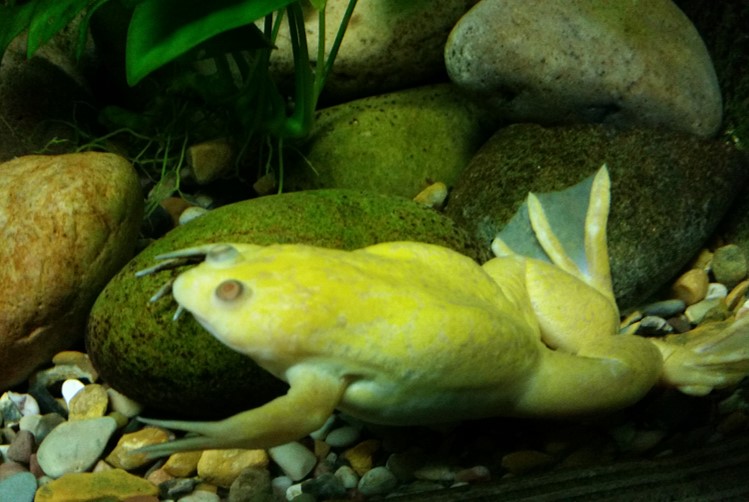Xenobots: Teaching an old frog new tricks

Since as early as the 1990s, a myriad of AI-driven healthcare technology has successfully reached the market. Perhaps one of most astounding—and maybe slightly unsettling—inventions of all involves the development of Xenobots, a new class of synthetic organisms that blur the lines between the physical, digital and biological worlds.
Made from embryonic cells derived from the African clawed frog, Xenopus laevis, Xenobots are touted as the world’s first living ‘living machine’ that can move around coherently, work together in groups, self-heal and even self-right when flipped on their backs. Although they are neither a traditional robot nor a known living organism, Xenobots are constructed much like a traditional robot. Whereas most people think that robots as made of synthetic materials, Xenobots use cells to build together a structure with organised behaviour predicted with the guidance of computer simulations and algorithms.
The first generation of Xenobots came from the joint effort of a team of biologists and computer scientists from Tufts University and the University of Vermont. The idea was first based on the hypothesis that genetically unmodified embryonic cells, when removed from their native microenvironments, can be coaxed to reassemble into interesting living forms and exhibit behaviours different from what their default anatomy would be.
In their work described in PNAS, the team utilized skin and heart muscle stem cells harvested from the African clawed frog (Xenopus laevis). After carefully observing how the cells began to work together and self-assemble into hundreds of spheroid-shaped cells which began to move around, they used AI to predict how the cells’ arrangement, distribution and overall shape affect their behaviour.
The cells were cut and joined manually under a microscope into a close approximation of the designs specified by the computer. The collaboration then gave birth to 1-millimetre diameter, Pac-man-like Xenobots that can move around in circular motions, exploring the environment on their own, while also spontaneously making piles out of particles placed in the dish.
Instead of using codes to program these robo-cells, the AI system used evolutionary algorithms to build a simulated environment—similar to those in video games like Fortnite and Minecraft—for the digital versions of the Xenobots to play whilst studying how different designs might affect the Xenobot’s functionality.
As the technology continues to evolve and researchers understand more about the system they have created, the next generation of Xenobots were developed. In a paper published in Science Robotics, the team described how Xenobots 2.0 were seen to move faster, have a longer lifespan, navigate more diverse environments and able demonstrate the capability of recordable memory.
Since then, this AI-driven transformation has generated a wide variety of Xenobots with different shapes, sizes and cell distribution. Some use legs or cilia, to shuffle or swim around on the floor of the Petri dish. Others use a fork- or snowplough-like appendage in the front that can sweep up loose particles, both spontaneously and collectively.
Just at the turn of 2021, the same team of researchers made another sterling discovery. It turns out that not only can the Xenobots adapt and move around in their new environment, they can also figure out a new and unique way to reproduce. As reported in this paper, the Xenobots used a form of reproduction called ‘kinetic replication’—a process only observed in molecules and not living things—to find, gather and combine undifferentiated single cells into clusters of cells that form self-copies.
However, there's a limit to how many of these baby bots can be created. Xenobots can only replicate once in one generation as the “children” they make are too small and weak to make “grandchildren”.
Currently, Xenobots are primarily used as a scientific tool to help scientists crack the "morphogenetic code" on how organisms are organised, how they compute and store information based on their histories and environment.
The research of Xenobots is still in its infancy and not yet commercializedl. Yet, the team has high hopes for the potential of Xenobots with ambitions to provide several services in the future. THeir suggestions include such as acting as micro-robotic drug delivery systems or cleaning up radioactive/microplastic contamination.
The ethical implications of Xenobot existence has been considered and overlap with ethics of AI research which raise fundamental questions about biology, ethics and philosophy. The team points out that given they are entirely biodegradable and rely on an external source of cells to replicate, Xenobots are highly unlikely to pose a future threat in the same way that AI may.



